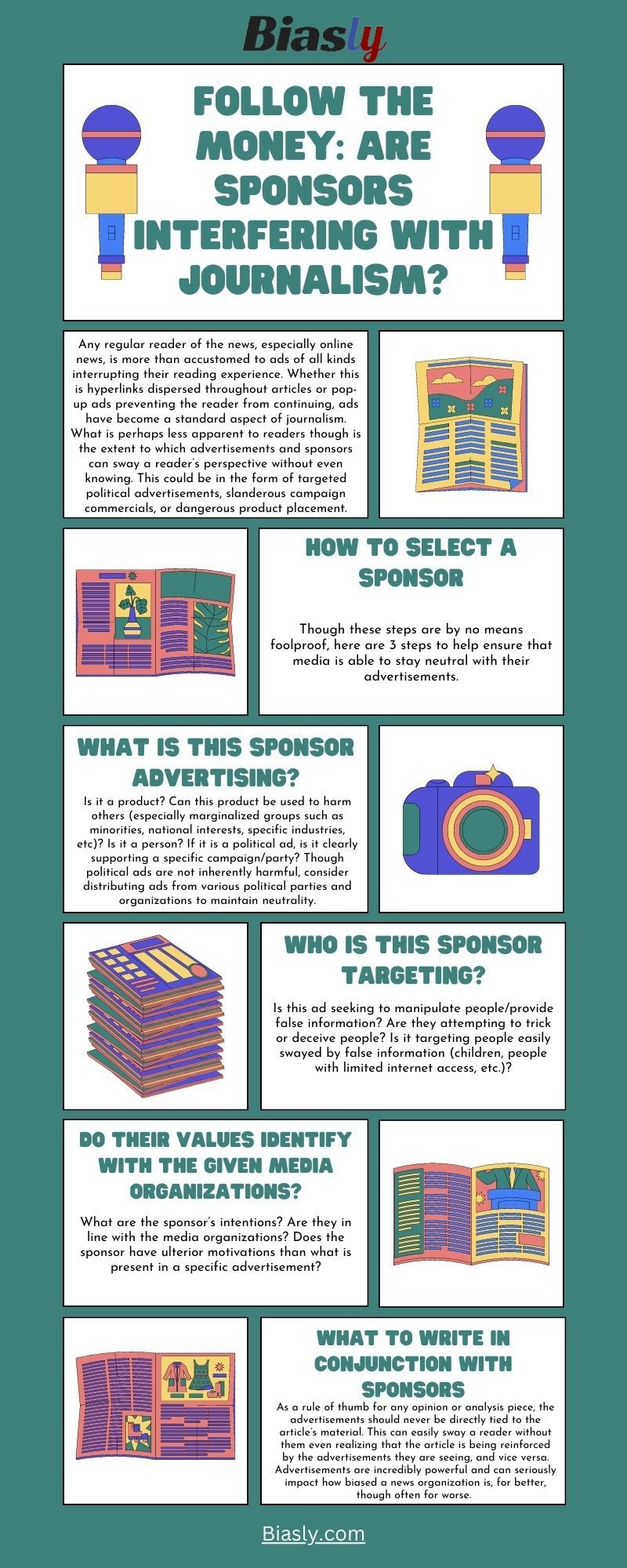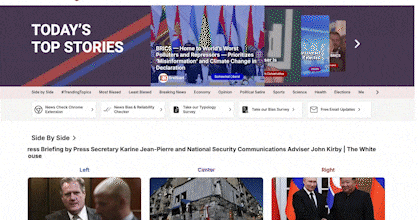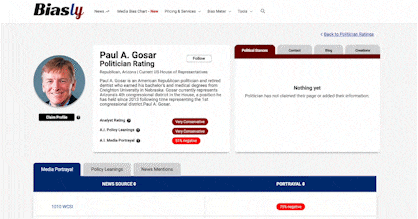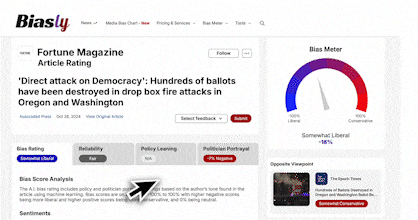
Any regular reader of the news, especially online news, is more than accustomed to ads of all kinds interrupting their reading experience. Whether this is hyperlinks dispersed throughout articles or pop-up ads preventing the reader from continuing, ads have become a standard aspect of journalism. What is perhaps less apparent to readers though is the extent to which advertisements and sponsors can sway a reader’s perspective without even knowing. This could be in the form of targeted political advertisements, slanderous campaign commercials, or dangerous product placement.
How to select a sponsor
Though these steps are by no means foolproof, here are 3 steps to help ensure that media is able to stay neutral with their advertisements.
What is this sponsor advertising?
- Is it a product? Can this product be used to harm others (especially marginalized groups such as minorities, national interests, specific industries, etc)?
- Is it a person? If it is a political ad, is it clearly supporting a specific campaign/party?
- Though political ads are not inherently harmful, consider distributing ads from various political parties and organizations to maintain neutrality.
Who is the sponsor targeting?
- Is this ad seeking to manipulate people/provide false information?
- Are they attempting to trick or deceive people?
- Is it targeting people easily swayed by false information (children, people with limited internet access, etc.)?
Do the sponsor’s values identify with the given media organizations?
- What are the sponsor’s intentions? Are they in line with the media organizations?
- Does the sponsor have ulterior motivations than what is present in a specific advertisement?
What to Write in Conjunction with Sponsors
Along with taking into consideration what types of advertisements are being presented in the media, it is also important to consider the actual material being written about. Should advertisements change what journalists write about? The answer is of course, complicated.
If, for example, a journalist is writing an article in support of a politician, it would seem improper to then include an advertisement for the same politician. Even including an advertisement for that politician’s political party can sway a reader in the direction of the politician.
Similarly, as a rule of thumb for any opinion or analysis piece, the advertisements should never be directly tied to the article’s material. This can easily sway a reader without them even realizing that the article is being reinforced by the advertisements they are seeing, and vice versa.
In general, advertisements can often have even more impact on what the reader takes away, and a result their biases, than even what is written in the articles they are reading. Advertisements are incredibly powerful and can seriously impact how biased a news organization is, for better, though often for worse. It is the responsibility of the journalists and media organizations to be thoughtful and particular about which sponsors they allow to run ads, as well as to identify when an ad is biased and could be swaying the opinions of their readers.
Companies should consider setting up a consultation with our media consultation team to learn more about how ads are impacting your bias leanings in the media.


























